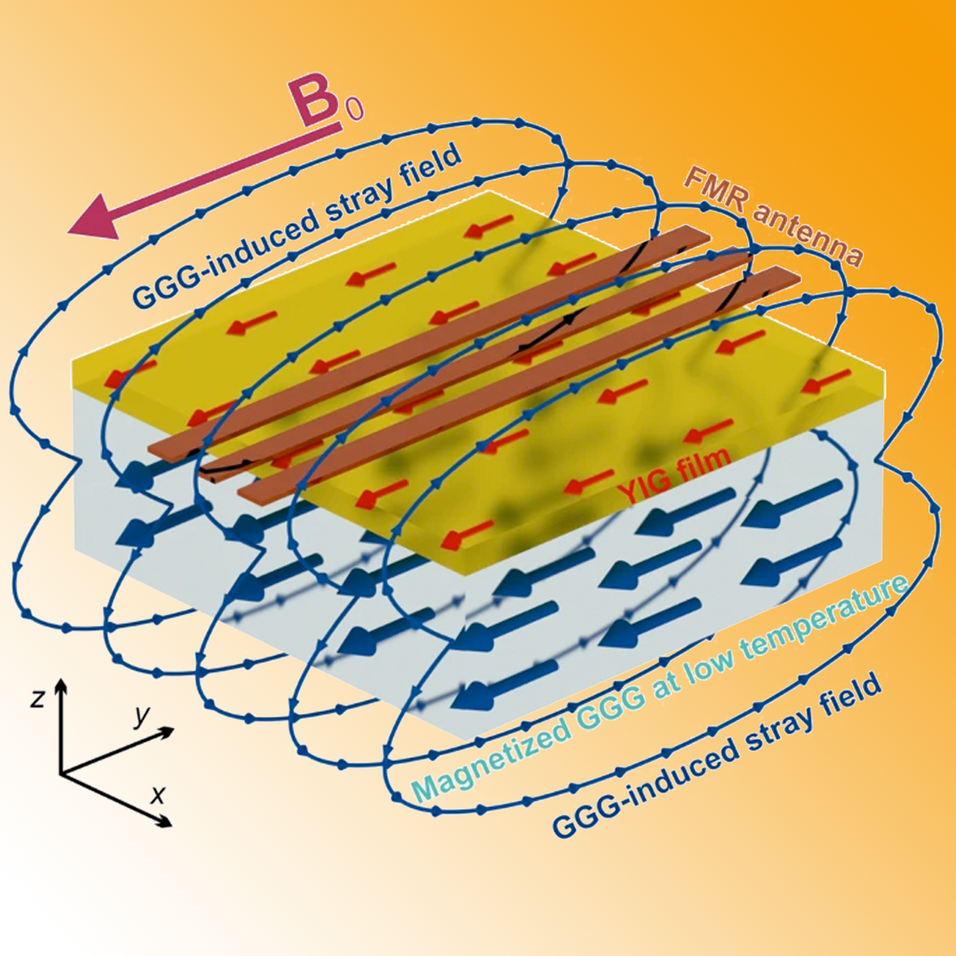The field of quantum magnonics investigates the quantum-mechanical properties of magnons, such as quantum coherence or entanglement for solid-state quantum information technologies at the nanoscale. In this case, an international team led by the Nanomagnetism and Magnonics group at the University of Vienna, has made a breakthrough in the use of YIG at ultra-low temperatures. The studies behind the published paper involve research groups from three continents and experts in experimental, theoretical and computational physics.
Yttrium iron garnet (YIG), a star in quantum magnonics, thrives on gadolinium gallium garnet (GGG) substrates, essential for long-living magnons. At room temperature, GGG is perfect, widely adopted in research. However, as we descend to the millikelvin realms necessary for quantum operations, GGG reveals a darker side. Unlike YIG, GGG is paramagnetic—it appears non-magnetic at room temperature, but cooling and applying a field endows it with a significant magnetic moment. This stray field profoundly impacts YIG's magnons, complicating the delicate quantum landscape.
Rostyslav Serha and his colleagues conducted rigorous experimental studies using state-of-the-art instruments that can go down to 30 mK. Combining these experiments with advanced numerical methods and analytical theory, they mapped the highly nonuniform spatial distribution of the GGG-generated magnetic field. Their work unveils the intricate interactions at play, opening the path to the quantum operations with the long-running magnons at the ultra-low temperatures.
- Magnetic anisotropy and GGG substrate stray field in YIG films down to millikelvin temperatures
R. O. Serha, A. A. Voronov, D. Schmoll, R. Verba, K. O. Levchenko, S. Koraltan, K. Davídková, B. Budinska, Q. Wang, O. V. Dobrovolskiy, M. Urbánek, M. Lindner, T. Reimann, C. Dubs, C. Gonzalez-Ballestero, C. Abert, D. Suess, D. A. Bozhko, S. Knauer, A. V. Chumak
npj Spintronics 2, 29 (2024)

